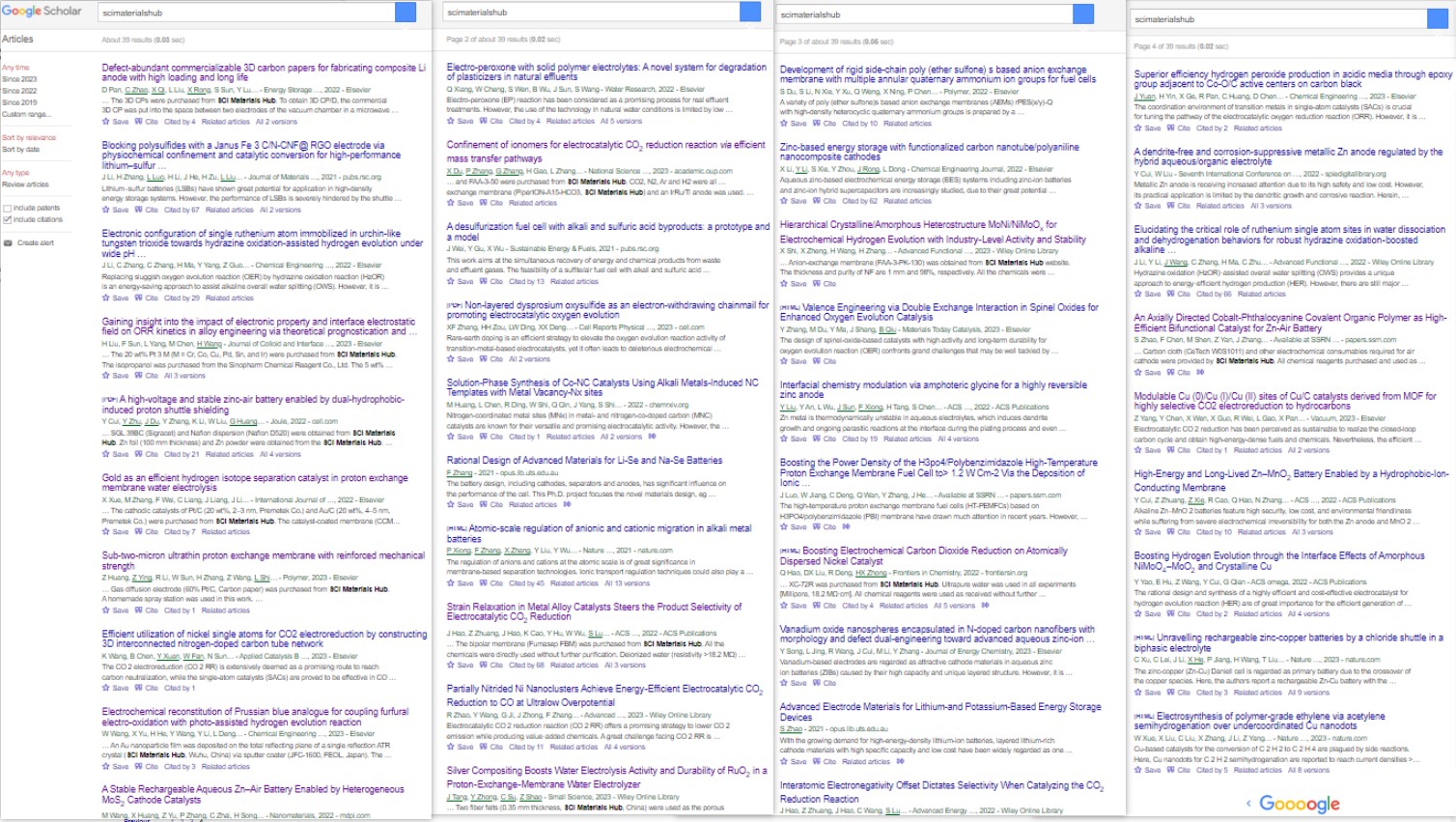
Youveim® Research-Grade Nickel Fiber Paper
High Electrical Conductivity · Superior Mechanical Strength · Excellent Corrosion Resistance · Versatile Electrode Substrate
Product Overview
Youveim® Research-Grade Nickel Fiber Paper is a porous conductive material made by sintering high-purity nickel fibers. It combines outstanding mechanical strength, electrical conductivity, and corrosion resistance. Its unique three-dimensional porous network offers large surface area, high porosity, and excellent flexibility, making it ideal as a high-performance electrode substrate, catalyst support, or current collector for energy storage materials.
This material finds wide applications in electrochemistry, electrocatalysis, and energy storage devices, especially in the fabrication of core components for water electrolysis (HER/OER), fuel cells, supercapacitors, and lithium-ion batteries.
Key Features
High Conductivity – Nickel fiber network ensures highly efficient and stable electron transport.
Superior Mechanical Strength – Pressure- and bending-resistant for long-term cyclic use.
Excellent Corrosion Resistance – Maintains stability in alkaline electrolytes and harsh corrosive environments.
Large Surface Area – Facilitates catalyst loading and enhances electrochemical reaction rates.
Flexibility & Processability – Easy to cut, press, and shape for various device structures.
Main Applications
Electrochemical Electrodes
Cathodes and anodes for water electrolysis (HER/OER)
Electrode substrates for alkaline fuel cells
Energy Storage Devices
Supercapacitor electrodes for improved energy and power density
Lithium-ion battery current collectors for optimized electron pathways
Catalyst Supports
Substrates for noble metal or transition metal catalysts
Support structures for catalytic reactions in water electrolysis and fuel cells
Electrochemical Sensors
High-sensitivity detection platforms with enhanced response speed and selectivity
Technical Specifications
| Product Code | Thickness | Thickness Range | Areal Density | Porosity | Density Type | Lead Time |
|---|---|---|---|---|---|---|
| NIFP025H | 0.25 mm | 0.20–0.25 mm | 580 g/m² | 70–80% | Low density / High transparency | 1 day |
| NIFP025L | 0.25 mm | 0.25–0.28 mm | 950 g/m² | ~60% | High density / Low transparency | 1 day |
| NIFP030M | 0.30 mm | 0.29–0.31 mm | 850 g/m² | ~70% | Medium-high density / Transparent | 1 day |
| NIFP040H | 0.40 mm | 0.40–0.42 mm | 950 g/m² | 70–80% | Medium density / Low transparency | 1 day |
Storage Guidelines
Store sealed, moisture-proof, and dust-free.
Recommended environment: 5–30 °C, humidity<60% RH.
Avoid heavy pressure, bending, and prolonged air exposure.
Cleaning Instructions
Immerse in anhydrous ethanol or deionized water; ultrasonicate for 5–10 min.
Rinse thoroughly to remove impurities and residual solvent.
Dry in an oven at 60–80 °C for ≥2 hours or under vacuum.
Avoid excessive friction to protect the structure.
Electrode Preparation (Catalyst Spraying Method)
Substrate Preparation – Cut to desired size, clean, and dry.
Slurry Preparation – Mix catalyst powder, conductive agent, and binder (e.g., PTFE/PVDF) in solvent; stir and disperse evenly.
Spraying – Apply the slurry evenly on the nickel fiber paper using a spray gun or ultrasonic sprayer.
Drying & Curing – Oven-dry at 60–80 °C; heat-treat at ≤350 °C if necessary to improve adhesion.
Post-Treatment – Check coating uniformity; press lightly if needed for shaping.
📧 Email: contact@scimaterials.cn
📞 Tel: +86 153-7569-8751
🔗 Click to place quick orders via our eBay / Amazon / Alibaba stores.
🌐 We ship worldwide via DHL, SF-Express, or other requested carriers.
📦 Bulk quantities with discount available upon request.
💳 Payment methods accepted: Bank Wire Transfer, PayPal, Credit Card (via Taobao), Alipay, WeChat Pay
| Product Code | Thickness | Areal Density (g/m²) | Porosity | Fiber Density | 5×5 cm (USD) | 10×10 cm (USD) | 20×20 cm (USD) | Lead Time |
|---|---|---|---|---|---|---|---|---|
| NIFP025L | 0.25 mm | 950 | ~60% | High, Low Transparency | $40 | $120 | $400 | 1 day |
| NIFP025M | 0.25 mm | 580 | 60-70% | Low, High Transparency | $30 | $90 | $296 | 1 day |
| NIFP025H | 0.25 mm | 580 | 70–80% | Low, High Transparency | $30 | $90 | $296 | 1 day |
| NIFP030L | 0.33 mm | — | 30–40% | High, Opaque | — | — | — | Contact |
| NIFP030M | 0.30 mm | 850 | ~70% | Medium-High, Transparent | $30 | $90 | $296 | 1 day |
| NIFP040H | 0.40 mm | 950 | 70–80% | Medium, Low Transparency | $30 | $90 | $296 | 1 day |
| NIFP050H | 0.50 mm | — | 60–70% | High, Opaque | — | — | — | Contact |
Partial references citing our materials (from Google Scholar)

Carbon Dioxide Reduction
1. ACS Nano Strain Relaxation in Metal Alloy Catalysts Steers the Product Selectivity of Electrocatalytic CO2 Reduction
The bipolar membrane (Fumasep FBM) in this paper was purchased from SCI Materials Hub, which was used in rechargeable Zn-CO2 battery tests. The authors reported a strain relaxation strategy to determine lattice strains in bimetal MNi alloys (M = Pd, Ag, and Au) and realized an outstanding CO2-to-CO Faradaic efficiency of 96.6% with outstanding activity and durability toward a Zn-CO2 battery.
2. Front. Chem. Boosting Electrochemical Carbon Dioxide Reduction on Atomically Dispersed Nickel Catalyst
In this paper, Vulcan XC-72R was purchased from SCI Materials Hub. Vulcan XC 72R carbon is the most common catalyst support used in the anode and cathode electrodes of Polymer Electrolyte Membrane Fuel Cells (PEMFC), Direct Methanol Fuel Cells (DMFC), Alkaline Fuel Cells (AFC), Microbial Fuel Cells (MFC), Phosphoric Acid Fuel Cells (PAFC), and many more!
3. Adv. Mater. Partially Nitrided Ni Nanoclusters Achieve Energy-Efficient Electrocatalytic CO2 Reduction to CO at Ultralow Overpotential
An AEM membrane (Sustainion X37-50 Grade RT, purchased from SCI Materials Hub) was activated in 1 M KOH for 24 h, washed with ultra-purity water prior to use.
4. Adv. Funct. Mater. Nanoconfined Molecular Catalysts in Integrated Gas Diffusion Electrodes for High-Current-Density CO2 Electroreduction
In this paper (Supporting Information), an anion exchanged membrane (Fumasep FAB-PK-130 obtained from SCI Materials Hub (www.scimaterials.cn)) was used to separate the catholyte and anolyte chambers.
SCI Materials Hub: we also recommend our Fumasep FAB-PK-75 for the use in a flow cell.
5. Appl. Catal. B Efficient utilization of nickel single atoms for CO2 electroreduction by constructing 3D interconnected nitrogen-doped carbon tube network
In this paper, the Nafion 117 membrane was obtained from SCI Materials Hub.
In this paper, Proton exchange membrane (Nafion 117), Nafion D520, and Toray 060 carbon paper were purchased from SCI Materials Hub.
7. National Science Review Confinement of ionomer for electrocatalytic CO2 reduction reaction via efficient mass transfer pathways
An anion exchange membrane (PiperION-A15-HCO3) was obtained from SCI Materials Hub.
8. Catalysis Communications Facilitating CO2 electroreduction to C2H4 through facile regulating {100} & {111} grain boundary of Cu2O
Carbon paper (TGPH060), membrane solution (Nafion D520), and ionic membrane (Nafion N117) were obtained from Wuhu Eryi Material Technology Co., Ltd (a company under SCI Materials Hub).
Batteries
1. J. Mater. Chem. A Blocking polysulfides with a Janus Fe3C/N-CNF@RGO electrode via physiochemical confinement and catalytic conversion for high-performance lithium–sulfur batteries
Graphene oxide (GO) in this paper was obtained from SCI Materials Hub. The authors introduced a Janus Fe3C/N-CNF@RGO electrode consisting of 1D Fe3C decorated N-doped carbon nanofibers (Fe3C/N-CNFs) side and 2D reduced graphene oxide (RGO) side as the free-standing carrier of Li2S6 catholyte to improve the overall electrochemical performance of Li-S batteries.
This paper used more than 10 kinds of materials from SCI Materials Hub and the authors gave detailed properity comparsion.
The commercial IEMs of Fumasep FAB-PK-130 and Nafion N117 were obtained from SCI Materials Hub.
Gas diffusion layers of GDL340 (CeTech) and SGL39BC (Sigracet) and Nafion dispersion (Nafion D520) were obtained from SCI Materials Hub.
Zn foil (100 mm thickness) and Zn powder were obtained from the SCI Materials Hub.
Commercial 20% Pt/C, 40% Pt/C and IrO2 catalysts were also obtained from SCI Materials Hub.
3. Journal of Energy Chemistry Vanadium oxide nanospheres encapsulated in N-doped carbon nanofibers with morphology and defect dual-engineering toward advanced aqueous zinc-ion batteries
In this paper, carbon cloth (W0S1011) was obtained from SCI Materials Hub. The flexible carbon cloth matrix guaranteed the stabilization of the electrode and improved the conductivity of the cathode.
4. Energy Storage Materials Defect-abundant commercializable 3D carbon papers for fabricating composite Li anode with high loading and long life
The 3D carbon paper (TGPH060 raw paper) were purchased from SCI Materials Hub.
5. Nanomaterials A Stable Rechargeable Aqueous Zn–Air Battery Enabled by Heterogeneous MoS2 Cathode Catalysts
Nafion D520 (5 wt%), and carbon paper (GDL340) were received from SCI-Materials-Hub.
Carbon cloth (W0S1011) and other electrochemical consumables required for air cathode were provided by SCI Materials Hub.
Oxygen Reduction Reaction
1. J. Chem. Eng. Superior Efficiency Hydrogen Peroxide Production in Acidic Media through Epoxy Group Adjacent to Co-O/C Active Centers on Carbon Black
In this paper, Vulcan XC 72 carbon black, ion membrane (Nafion N115, 127 μL), Nafion solution (D520, 5 wt%), and carbon paper (AvCarb GDS 2230 and Spectracarb 2050A-1050) were purchased from SCI Materials Hub.
2. Journal of Colloid and Interface Science Gaining insight into the impact of electronic property and interface electrostatic field on ORR kinetics in alloy engineering via theoretical prognostication and experimental validation
The 20 wt% Pt3M (M = Cr, Co, Cu, Pd, Sn, and Ir) were purchased from SCI Materials Hub. This work places emphasis on the kinetics of the ORR concerning Pt3M (M = Cr, Co, Cu, Pd, Sn, and Ir) catalysts, and integrates theoretical prognostication and experimental validation to illuminate the fundamental principles of alloy engineering.
Water Electrolysis
1. International Journal of Hydrogen Energy Gold as an efficient hydrogen isotope separation catalyst in proton exchange membrane water electrolysis
The cathodic catalysts of Pt/C (20 wt%, 2–3 nm) and Au/C (20 wt%, 4–5 nm) were purchased from SCI Materials Hub.
2. Small Science Silver Compositing Boosts Water Electrolysis Activity and Durability of RuO2 in a Proton-Exchange-Membrane Water Electrolyzer
Two fiber felts (0.35 mm thickness, SCI Materials Hub) were used as the porous transport layers at both the cathode and the anode.
3. Advanced Functional Materials Hierarchical Crystalline/Amorphous Heterostructure MoNi/NiMoOx for Electrochemical Hydrogen Evolution with Industry-Level Activity and Stability
Anion-exchange membrane (FAA-3-PK-130) was obtained from SCI Materials Hub website.
Fuel Cells
1. Polymer Sub-two-micron ultrathin proton exchange membrane with reinforced mechanical strength
Gas diffusion electrode (60% Pt/C, Carbon paper) was purchased from SCI Materials Hub.
Characterization
1. Chemical Engineering Journal Electrochemical reconstitution of Prussian blue analogue for coupling furfural electro-oxidation with photo-assisted hydrogen evolution reaction
An Au nanoparticle film was deposited on the total reflecting plane of a single reflection ATR crystal (SCI Materials Hub, Wuhu, China) via sputter coater.

|
We Provide A Broad Range of Materials, Instruments & Solutions in Advanced Science and Technologies | About Us |



